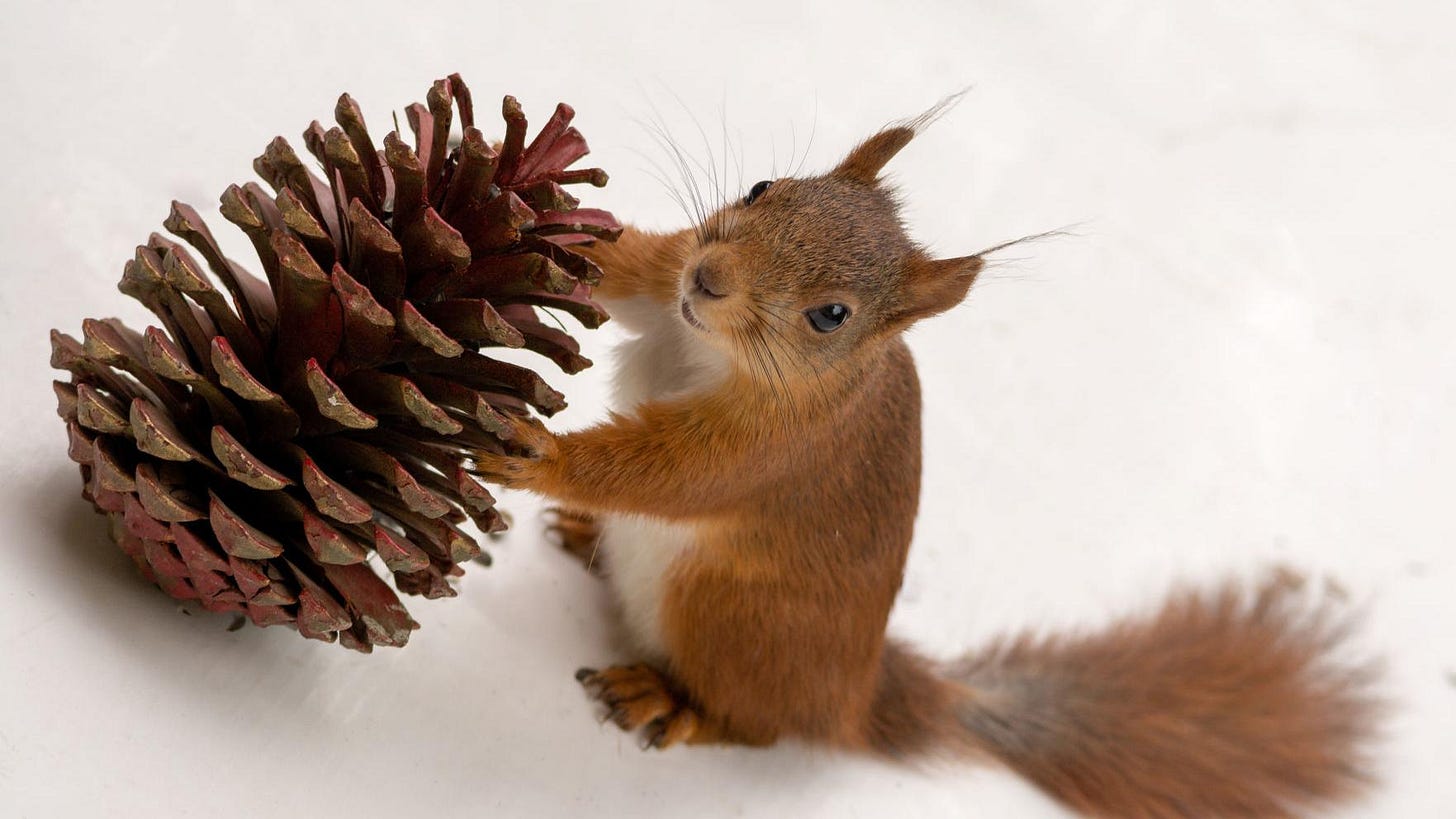While deciduous trees shed their leaves every fall and go through intense visible changes, evergreens like pine stay steady as their efficient shapes and thin needles transform the energy of the sun year round. For cultures all over the world, pines symbolize the power of life — of surviving and thriving through the changing seasons. In the Celtic “tree alphabet” known as Ogham, alim is pine or conifer and is associated with contemplation, finding one’s purpose, and finding home. To Haudenosaunee First Nations, white pine is the Great Tree of Peace.
By keeping their leaves through the winter, pine forests are an oasis for wildlife, providing food and shelter for animals that face increased scarcity in cold, harsh weather. Chipmunks and squirrels eat the seeds of pine cones, while deer and bears snack on tree bark. Owls can be heard in the cold winter air hooting from their roosts in old trees. Pine warblers spend most of their time in pine trees, red- tailed hawks nest in pines close to edges and openings in the canopy, and bald eagles may use dead pine trees as lookouts for clear, unobstructed vantage points. For woodpeckers, squirrels, and bats, a hollowed trunk is a protective cavern.
With a spiraling growth of branches, needles, and cone scales, pine offers year-round medicine that can clear our lungs, strengthen our immunity, and cleanse our environment. A tincture or fresh tea from young green pine needles is extremely high in vitamin C, perfect for fighting the common cold or to boost our immune system in winter. The needles and twigs can be used for a revitalizing, clearing steam for congestion or a warming circulatory- stimulant bath for a winter chill or general aches and pains. I usually collect branches and needles from the forest floor after strong winds or a storm.
Every species of Pinus contains edible seeds that we call pine nuts. Harvested from cones, they can be used as a wildcrafted ingredient in pesto, but the seeds of most species are small and take time and patience to shell. Red squirrels love them and are skilled at shelling, and as they feast on them, they help spread the seeds. Their nickname, “pine squirrels,” reflects their strong symbiotic relationship and devotion to these evergreens.
Pines are mostly monoecious, meaning the male and female cones are produced by single trees at the same time. The familiar woody, egg- shaped cones are the females that produce seeds, and the male cones, whose elongated, scaly structures grow in clusters and are substantially smaller, produce yellow pollen that has recently been touted as an adaptogenic superfood. In most species, both seeds and pollen collaborate with wind, and studies have shown that pollen can travel hundreds of miles to find receptive females and produce viable seeds. In the case of species like white pine, second- year cones open up in dry weather so gusts of wind can catch and carry them. Pines with large seeds rely more on animal dispersal by birds and furry creatures like the red squirrel. Wet weather just washes seeds away, so these intelligent trees close their cones to protect the seeds when it’s humid or about to rain.
In environments where fires are frequent, some pine species have evolved thick, hard, serotinous cones that are glued shut with a strong resin. They hang on a pine tree for years, long after the enclosed seeds mature. Only when a fire sweeps through and melts the resin do these heat- dependent cones open up, releasing seeds in huge numbers that are then distributed by wind and wildlife to repopulate desolate ground. While these seeds have adapted to fire to break their dormancy, unnaturally severe fires are destroying forests, even those where controlled fire existed historically.
These trees are thought to have evolved from now- extinct ancient evergreens about 95 million years ago. They were on this planet long before we were and there is much we can learn by spending time with these wise elders that can live for thousands of years. Estimated to be 5,067 years old, a Great Basin bristlecone pine in California’s White Mountains may be the oldest living tree on Earth.
Many of us just need to look down and see the beautiful brown wavy lines and other patterns on our golden wood floors to connect with pine trees. White pine is one of the trees most commonly cut to become our floors and each beautiful marking speaks to a moment in their lives. Even after they are gone, trees are still solid ground that supports us.






